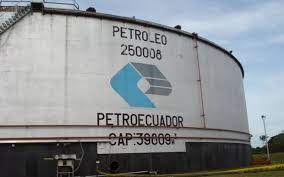Gunvor’s Blockbuster FCPA Settlement: Lessons Learned and Trends (Part III of III)

The Department of Justice’s blockbuster FCPA settlement with Gunvor restores the credibility of DOJ’s pronouncements of DOJ’s commitment to aggressive FCPA enforcement. While I have questioned DOJ’s commitment to its corporate enforcement policy in recent high-profile settlements (ABB and SAP, in particular), DOJ’s Gunvor settlement of $661 million stands as the ninth largest FCPA settlement in history. DOJ’s settlement is proportionate to the misconduct and consistent with other large FCPA settlements.
DOJ’s settlement brings much-needed attention to anti-corruption risks as a continuing concern for all global companies. We continue to read about the growing risks from artificial intelligence, data privacy, and cybersecurity, as well as generalized climate and other disclosure risks. Anti-corruption risks have stood the test of time, and if anything have maintained a steadfast position in the list of significant risks for global companies. The Gunvor settlement is a well-timed and welcome reminder for corporate boards, senior executives and legal and compliance personnel on the importance of anti-corruption compliance and the important elements of a compliance program.
Aside from these general observations as to the Gunvor enforcement action, DOJ’s settlement underscored several important compliance reminders and trends:

High-Risk Commodity Trading Activities: Companies that participate in energy trading markets would be well-advised to conduct a self-initiated review of their operations. We have seen one-by-one the major commodity trading businesses fall under the FCPA enforcement sword — Glencore, Vitol and now Gunvor. More have to be waiting in the wings. Commodity trading combines all of the high-risk elements that warrant strict scrutiny for FCPA violations. Large transactions (volume and amounts) between traders and foreign energy officials that are lucrative and subject to vigorous competition.
Critical Third Parties: Like every FCPA enforcement action, at the heart of the scheme are corrupt third party intermediaries who are often segregated into distinct responsibilities that reflect a commitment to execution of an overarching bribery scheme. In the Gunvor case, the bribery schemes were carried out with the assistance of two critical third parties, along with layers of shell companies and use of “administrative-type” third parties for actual transmission and payment of bribes to Petroecuador officials.
Given the overall importance of the third-parties, and the amount of funds being paid to the two third parties, the glaring question for Gunvor’s board, senior executives and legal and compliance team is “what took you so long?” It was not until 2018, six years after the bribery scheme was ongoing for Gunvor to start asking questions and looking at the relationship and payments made to the third parties.
My question begs the obvious need for Gunvor (in the past) and other global companies (in the future) to develop and implement appropriate monitoring, testing and review procedures for high-risk third party business. Such an inquiry should not be difficult to design and implement and most companies should be able to identify those suspicious or high-risk third-party relationships based on available financial data.

Similarly, a high-risk third-party review should include a review and analysis of all payments made to high-risk third parties and the documentation provided to justify such payments. It is one thing to focus on the onboarding process for third parties, and it is quite another to build and commit to robust monitoring, review and testing procedures. If properly executed, companies should be able to identify quickly those third parties that require additional scrutiny to resolve red flags and other indicators of potential improprieties.
Business and Gatekeeper Inquiries and Failures to Act: The Gunvor case reflects again the disturbing trend of resistance to business and legal/compliance inquiries. Starting in 2018, Gunvor senior executives and legal/compliance made inquiries from the Pere brothers concerning the lack of documentation and need to meet with Gunvor officials to discuss their activities. The Pere brothers, however, resisted these requests and it took nearly two years for Gunvor to terminate the relationship. In fact, even while the Pere brothers were resisting Gunvor follow up requests for information and explanations, Gunvor continued to execute its bribery schemes.
Under these circumstances, there is no plausible justification for Gunvor’s delay to put a halt to its activities with these high-risk third parties, especially after they blatantly failed to provide requested information or meet with Gunvor officials. A failure to act — in this context — provided DOJ important evidence that Gunvor fully was aware of the illegal bribery scheme and was slow to intervene and cease the illegal activities.















